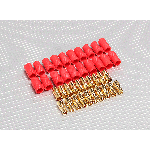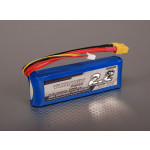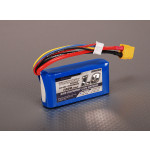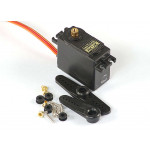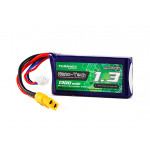
Introduction
If you look for information about what to consider and the parts to look at if you are considering building a larger quad, hex, or octocopter to carry a camera and gimbal then it can be tricky.
Most of the articles, videos, and forum posts about building multi-rotors focus on the building and creation of smaller racing models these days. I'm often asked about it from subscribers and readers and have been waiting for the chance to bet one of the experts in a room pick their brains.
Recently I spent a few days with 3DXR in North Yorkshire. While there I got a chance to talk to Ben Wilkinson. Ben is one of the owners of the business and a commercial UAV pilot. He builds and flies drones with cameras and video systems as part of his business. In addition, he sells and builds parts to complete UAV systems for customers too, specializing in the larger models needed for cameras and video systems.
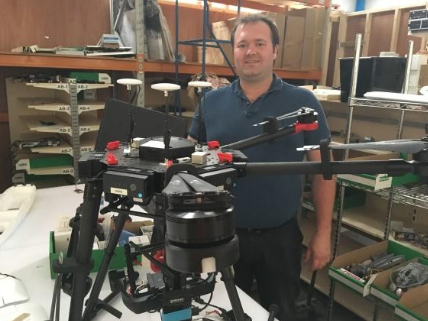
I asked Ben how they go about picking the components and building the multirotors for customers. "There isn't an off the shelf solution is you want something bigger than a DJI Phantom but less than the huge models that weigh over 7kg", he explained, "if you can build a model that weighs less than 7Kg, including the batteries, then the permission and process needed to fly commercially are a little easier."
Stood in his workshop surrounded by all of the specialist motors, props, ESCs, frame parts, cameras, gimbals, and both fixed-wing and multirotor UAV craft it seemed like the perfect opportunity to pick his brains and look at some of the tips and tricks when looking to build a large multirotor.
"Sometimes, turning up to a professional gig with a DJI Phantom doesn't look great", Ben joked.
With that in mind let's look at the things to consider then when looking at build a large multirotor and let's look at the parts you'd consider for a model weighing 3-4Kg.
First Principles
Ben explained that the temptation when planning to build one of these larger models is to reach for the catalog, open the web browser and start looking at the frames and motors on offer was usually the wrong place to start.
"Key things to think about are how long you want to be able to fly for, what kind of camera you want to use and if you need a gimbal". Ben explained, "You need to have a clear idea on the weight of the model as you'll need that amount of thrust at 50% throttle from the motors and props when flying."
"If you only want to use a GoPro camera and simple gimbal then you can keep the weight down. SLR Cameras like the Sony A6000 are good choices as they can be controlled remotely and weigh only a few hundred grams."
"It's when you are considering video that the weight can increase dramatically. A gimbal for a video rig can weigh 700g to 1Kg on its own. A capable video/photo camera with a decent lens can weigh well over 2kg. Being clear on the type of equipment you want and its weight is a good place to start as it defines the thrust you need in the model, that dictates the motors, that dictate the ESCs and power system you need that dictates the size of batteries you need". Explained Ben.
That sounds like very sound advice, let's start with the first step once you've got a good idea of what you want to use the new build model for.
Choosing the brushless motor and propellers
As Ben explained, we need the weight of the model to be the same as the trust from the motors at 50% throttle, ideally, a little less in case, you have to fly in slightly windy conditions.
"It's all about low KV motors and large props for these bigger models. If you pick a motor and prop that will produce a little over twice the thrust then you are starting in a good place for your build."
With smaller racing quads pilots and builders are forced to use smaller props that fit the small frames and to increase the thrust they use extra blades and large pitches. It's common for a small quadcopter to use 3, 4, and 5 bladed props.
The most efficient props are actually two-bladed (one blade is even better but that's another story) so that is what all of the larger models use. On a large multirotor it's all about power and efficiency, you want to fly for as long as you can and easily carry the weight.
With these larger 2 bladed props, you can produce the lift you need at high efficiencies by rotating them a lot more slowly. Slow is a relative term here, on smaller racing quadcopters you might use 5" propellers with a 2300Kv motor, on a Phantom you may swing 10" propellers with around 1000KV, and with the larger multirotors you want to be swinging a 14-16" prop with motors with less than 700KV. Each setup produces similar levels of thrust but the larger props on lower KV motors use a lot less power to do so. That's what you need to be looking at for any larger model. These motor and propeller setups are very efficient and pull far fewer amps than you'd expect, even on really heavy multirotors.
Manufacturers like T-Motors and KDE make some excellent motor and prop combinations for larger models. Let's look at one of the datasheets for a good motor choice for a model weighing around 2.0-2.5Kg. This datasheet is for the MN3510 KV700 motor from T-Motor. By looking at the specifications for this motor we can see that using a 4S battery and a 13" carbon fiber prop with a 4" pitch we can get around 730 grams of thrust at only 4.7 Amps. This could be even less using even larger props and even lower KV motors. The same motor in a 360Kv setup pulls under 3 amps for a similar thrust. It's worth taking your time looking at the specifications. If we want to build a quadcopter using these motors then we could have a maximum model (including batteries) of 2.92Kg as each of the motors would provide 730g of thrust at 50% throttle and we have four of them.
Ben made a great point about building a multirotor with more arms and motors provide some additional advantages. "A quadcopter will not provide the same level of protection in the event of a problem", Ben explained, "if one motor or prop fails then you're in trouble. A better option for a larger model is to use a hex or octocopter setup where the loss of a single motor will still allow you to land the model safely." If we were to consider making a model with eight of those motors then we would have the ability to lift 8 x 730g at 50% throttle, a maximum weight of 4.3Kg but then you'd have to factor in the additional weight of the larger batteries, extra motors and arms on the model too. Not all of that weight can be used for a camera and gimbal.
Ben warned about using ‘cheap' props in your model. Ben has tested a few cheap carbon fiber props on the bench and through they should have produced the same thrust the reality was far from the same. "Buying cheaper props can be tempting but in the tests I've done here they can produce up to 40% less thrust, they are a false economy." "Really larger models over 7Kg often use the huge motors that spin at only 200-300KV". So as we move through the rest of the considerations we need to keep track of the weight of all the pieces we add to the model. If we wanted to use this motor then we need to try and keep the all-up weight to below 2.5Kg.
The ESCs
So now we know what motors props and how many we need, what about the ESCs? Well, the good news here is that this is a little less exotic until you get to the much larger models. "For the larger multirotors you really need to be running them on 4S or 6S", Ben explained. "The largest models will be running on 12S but the motor thrust tables will show you the voltage you should be looking at using". Again, it's worth looking at ESC models designed for the larger multirotors.
Looking at the T-Motor website they manufacture a few series of them for different applications. For the kind of model, we're considering here then the AIR series that come in sizes ranging from 15A to 40Amps and look like the kind of ESCs used in all kinds of Multirotors in the hobby. For those applications where you want larger amperages then ESCs like the T-Motor Flamer series with ratings of 60A to 100Amps and inbuilt cooling fins more usually found on ESCs in boats and cars are a better choice. "Don't skimp on the rating of the ESC", Ben warned, "Use an ESC that is rated at far higher than the amperage the motor needs. That way you way not running the ESC anywhere near its maximum and it'll last longer and work better for you."
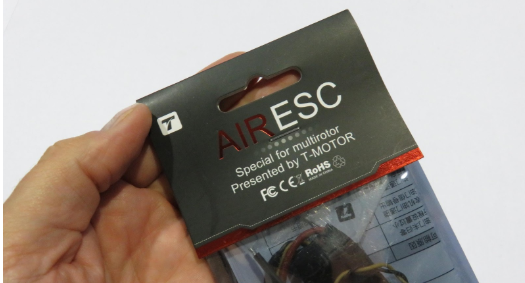
Even on the motor/prop combo we've looked at with a maximum amperage of 10.1Amps at 100% throttle you'd use a 20A ESC, or maybe even a 30Amp ESC. So now we've got an idea of the weight of the camera and gimbal, the motors and props we want to use and the ESCs too. We'll need to keep track of the weight of all of these pieces to make sure that we are still able to hover easily at that 50% throttle mark.
The Battery
The next step is figuring out the battery needed. As we've already looked at when discussing the ESCs, for a large multirotor you'll need a 6S LIPO battery or one that matches the voltage sheet for the motor and prop you've chosen. A lot of weight will be in the batteries so you need to recheck the weight of the motors, props, frame, camera, gimbal (if used) and flight controller, and associated electronics. Most of the rest of the weight available can be taken up with batteries.
A large pack can weigh as much as 1kg. As LIPO packs get to the larger capacities you'll notice that the ‘C' rating for those packs will reduce so a large 6000mAh pack may only have a rating of about 30-50C typically. If we had a 6000mAh LIPO with a rating of 30C, that gives a theoretical maximum discharge of 30, 6000mA = 180Amps. Now on a hexacopter with six motors that would mean 30Amps available for each one at full throttle. In practice, you do need to treat the C ratings as a ‘theoretical' maximum and I'd expect to have about 25Amps maximum. That's way more than the 10.1Amps max needed for the motors and props so this would work well.
How long would that pack last then? Well, we can figure that out using the datasheet we've looked at. At 50% throttle (that should be the hovering point is we've got the weight right), each of the motors pulls 4.7Amps. So the six motors would pull a total of 28.2Amps. We can safely use 80% of the charge in the pack so we have 4,800mA in a 6000mAh LIPO battery we can use. The more you pull from the pack, the faster it will be empty - if we pulled 4.8amps we'd have an empty battery in 1 hour, if we pulled 9.6amps, the pack would be empty in 30 minutes, if we pulled 19.2Amps them the pack would be empty in 15 mins. So, in this case, to figure out the flight time in the hover we need a little maths. We need to divide 4,800mA (the available capacity in the battery) by 28,200mA (the 28.2 Amps total amperage at hover). That works out to be0.17 hours or 10.2 minutes. For the first flights, I'd set the timer to well below that. In practice, there will be more current pulled from the pack from the other electronics and you rarely get to hover for an entire flight.
If you need more flight time (and could afford the extra weight, remember to keep track of the battery weights here too) then you could connect two 6s LIPO packs in parallel to increase the capacity available. Or, as we've already looked at you could change the motor and propeller to another more efficient setup that will use larger props. "Consider using packs with low C ratings", explained Ben, "larger C rating packs are a lot heavier, and with these large capacities and very efficient motors and props you don't need huge C ratings." So now we know the motors, props, ESCs, and batteries to choose from and we know the total weight we need to be under. We're halfway.
What's next?
Once we've got this level of detail then the next steps are to look at the flight controller, radio, FPV gear, telemetry, and then finally the options for the frame. Join me next month where we continue to look at the considerations for building a larger model. Thanks again to Ben at 3DXR for sharing some of the secret sauce they use to build custom large scale multi-rotors for customers and spending his time helping me navigate the murky waters of larger multirotor building. For those of you who are looking at building something like this and need some help and advice, consider giving the team at 3DXR a call. They certainly know their onions, especially large, multirotor ones!
Written by Painless360

